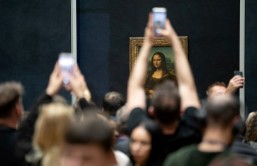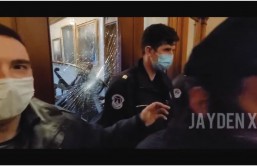The Smithsonian Institution announced plans for a massive redesign on its south campus on the National Mall in Washington D.C. The makeover for its oldest buildings will cost $2 billion and work will occur over the next 20 years.
The Institution chose BIG-Bjarke Ingels Group, a New York and Copenhagen based firm, to complete the project. The 40-year-old architect Bjarke Ingels from Denmark has been planning the campus redesign for nearly a year and a half.
"The Smithsonian is the national museum of America, and it's located right smack in the middle of the capital, framing the Mall on both sides," Ingels told Smithsonian.com. "In terms of its cultural and historical significance, and of course also the content - the different museums and educational institutions that are a part of the Smithsonian - makes it a super interesting place to work with."
The redesign will include renovations to the Smithsonian Castle, and new entrances for the National Museum of African Art and the Arthur M. Sackler Gallery. The latter buildings are located underneath the Haupt Garden, so Ingels wants to elevate the garden on either corner to create angled entrances to the underground museums.
"It's almost as if the spaces underground open up and reveal themselves to the garden and to the mall," Ingels said. The renovations will increase gallery space by 30 percent in both museums and skylights will bring more natural sunlight into the galleries.
Ingels also plans to improve access to the Freer Gallery of Art and to the Hirshhorn Museum and Sculpture Garden. The redesign will lower a wall around the Hirshhorn that the architect calls "incarcerating." He will also try to create more exhibition space under the sculpture garden to accommodate larger modern art installations.
The remodel will work to balance the plan's innovative steps with the architectural history of the older Smithsonian buildings on the Mall. The Arts and Industries Building was established during the Victorian-era and the Hirshhorn came in the 1970s.
"It's almost turning architecture into an art of reinterpretation," Ingels said. "What we tried to do with Smithsonian is reinterpret all of the qualities that are already there, and strengthen and enhance them, and maybe sometimes tweak them, but the point of departure is always the existing character that is there."
The first part of the project will involve the Smithsonian Institution Building, also known as The Castle. Ingels will place the entire building on a "tray resting on elastic point-foundations that absorb any seismic shock," according to Smithsonian.com. The uplift will allow for construction under the Castle and reveal the vaulted ceilings in the building's basement that have been hidden from view.
"We're hoping to shift the paradigm away from the administration and toward the visitor experience," Wayne Clough, secretary of the Smithsonian Institution, told Smithsonian.com. "The enhancements really focus particularly on public access."
A combination of federal and private funds will cover the $2 billion cost.








